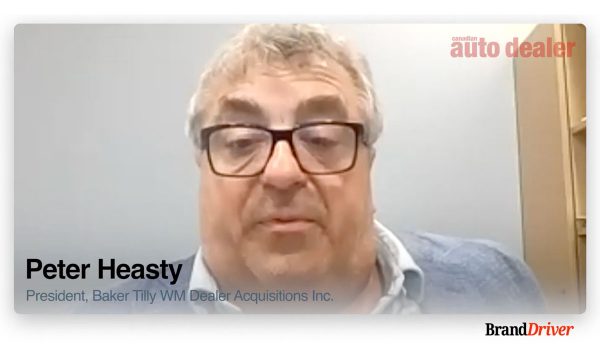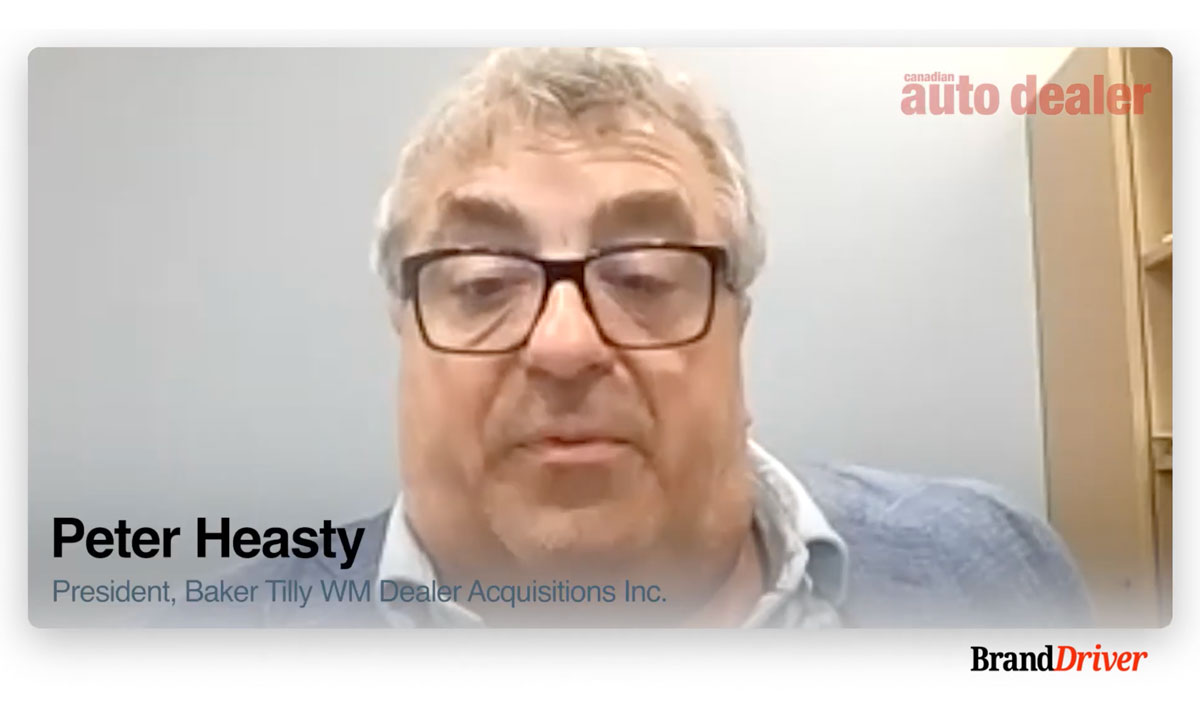Expert advice on how to prepare your dealership for sale
It’s never easy for a Dealer Principal to decide when it’s the right time to sell his or her dealership. They have their own life journey to consider, but there are also a host of other factors such as the current buy/sell market, recent financial performance and getting the dealership positioned legally and financially for the transaction.
Peter Heasty, who has worked for more than 30 years in the auto business, including a role as a Chief Financial Officer of a large dealership group, and as a Dealer Principal himself, says he fully understands their situation.
Heasty is President of Baker Tilly Dealer Acquisitions Inc, a leading professional chartered accounting firm, and he is focused exclusively on dealerships. His “in-the-trenches” experience gives him a unique lens on being able to relate to his clients, and understand their concerns and goals.
Heasty explained some of the key things dealers should consider in a video interview with Canadian auto dealer.
For some dealers, the pressure of running a dealership and competing in markets with dealerships that have full marketing divisions and Internet operations can be taxing. “You’re told that if you don’t answer a lead in 32 seconds you are going to lose it to the competition.”
He said dealers who haven’t invested as heavily in digitizing their operations and new marketing practices are feeling additional pressures.
“Running a car dealership today is a challenge. You never know what the day is going to bring and there are decisions you make every day,” says Heasty. “There comes a time when you just want to smell the roses —
You can buy a lot of roses with $20 million bucks.”
At some point, some dealers recognize it’s a good market for buy/sell, there is a lot of consolidation going on and they decide that it’s time. “If you’re still having fun and you want to go in every day, all the power to you. But the cheques are bigger, as big as they’ve ever been still today.”
Heasty operates a one-stop shop so that dealers can ensure all aspects of their transaction from legal to finance and accounting have been accounted for.
When dealers do make the decision, Heasty says advice he gives them is to not try to do it alone, or with a legal or accounting firm that isn’t experienced in the dealership buy and sell space.
“Make sure you get proper advice, because if you are going to sell you need to pre-plan your tax and your exit strategy,” says Heasty.
“You need a conductor who is experienced, who does these things because I’ll tell you what, if you don’t get to the finish line, everybody loses, especially the seller who’s now mentally committed to selling.”
He said to prepare for a sale, it never hurts for dealerships to “pull up their socks” and enhance the profitability by focusing on areas your dealership might be lagging behind other franchises. “We have ways of maximizing a dealer’s return, even if their profitability is not where it could be, but when you’re actually making money it does make a difference and makes it easier to do a transaction.”
As for trends impacting the markets at the moment, Heasty doesn’t see the current threats or “disruptions” as having a major impact on the prices paid for dealerships. The business model is solid, the transition to EVs is starting and the increase in acquisitions is because people in the business community recognize dealerships can be profitable businesses.
“At the end of the day, everybody has to win,” he says. “My rule of thumb is that the buyer has to see their way to about a 20 per cent return.”
So, if a dealership is looking at a transaction that looks like it’s an 11 or 13 per cent return, Heasty says they do their homework and present evidence that the dealership can hit those targets. “You do the analysis, you present it, you say, ‘Here’s what we need for the store.’ And you show the buyer that within three to six months they’re going to be making a 20 per cent return.”
To reach Peter Heasty, send him an email at: [email protected]

















